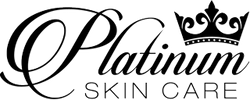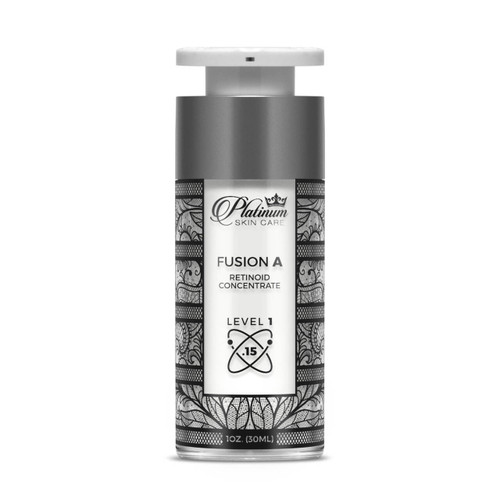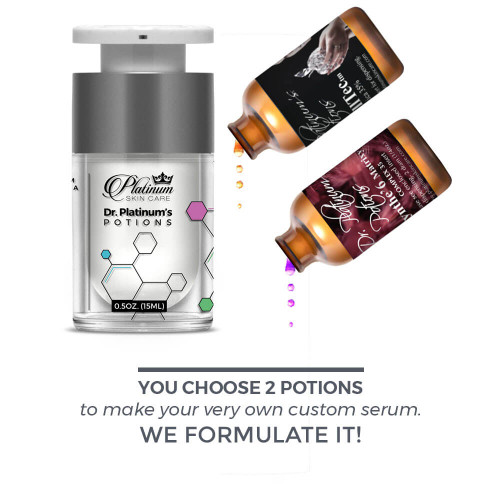About Fusion A Retinoid Concentrate
Retinoid Concentrate *updated from Molecular Serum July 26, 2022 This is a Much stronger formulation. Move DOWN. Start SLOW. Acclimate.
Retinaldehyde (Retinal) - Hydroxypinacolone Retinoate (Granactive Retinoid) - All Trans Retinol
If there was an ingredient that was worthy enough to be deemed “magical” … Vitamin A would be it! Far from fluff, and backed by decades of studies, retinoids are one of the most highly regarded ingredients recommended and used by dermatologists.
Here are some stats attributed to retinoid use on the skin:
- Prevent premature aging.
- Stimulate the growth of new skin cells.
- Increase elasticity.
- Lessen or remove hyperpigmentation/melasma.
- Unclog pores. Reduce sebum production.
- Antibacterial effect on P.acnes bacteria[cite].
- Reduces the appearance of pores.
- Reduce oxidizing effects.
When products are infused with retinoids, the vitamin can help improve hydration and plumping.
The natural rate of our skin’s cell turnover is about 30 days when we are in our youth. As we reach our 40's, this can stretch out substantially. Retinoids stimulate cell proliferation (turning over the old cells quickly to replace with new) and can even help to plump skin that has become thinner over the years. To give your skin that tight, smooth, and fresh look… we need to speed that up again.
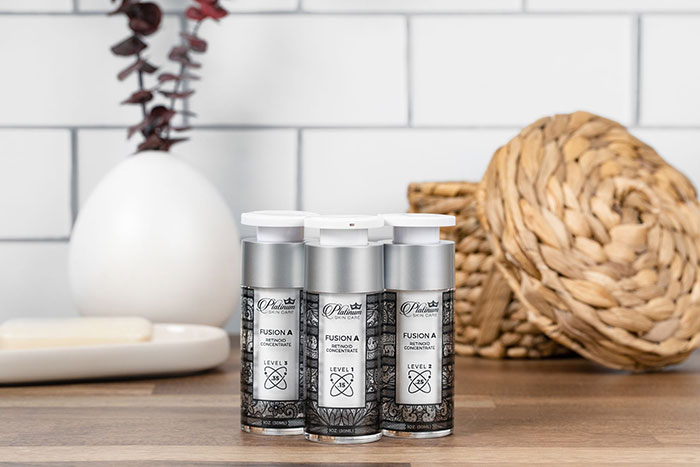
"The only FDA-approved topical treatment for wrinkles is tretinoin. Ashinoff says this prescription cream reduces fine lines and large wrinkles, and repairs sun damage. Retinol is a natural form of vitamin A found in many over-the-counter products. Studies show that in a stabilized formula, in high concentrations, it may be as effective as Retin A, without the side effects, such as skin burning and sensitivity". [1]
When you add a retinoid into your evening regimen, you can accelerate that rate from a couple of months to less than two weeks[6]!
Retinoids all work by binding to and activating the skin’s retinoid receptors. In the process of doing this, they alter the skin’s DNA and enhance the gene expression. When these retinoid receptors are “turned on” a cascade of mechanisms that benefit the skin begin. This can result in skin that is more exfoliated, pores more refined, clearer, wrinkles minimized, and acne controlled.
But here is the KEY.. your skin can only use the pure form of vitamin A called retinoic acid. So, all other forms must be transformed by the skin into this state. *Your skin’s proteins will take care of this for you but understand that the more steps it needs to transform, the weaker the retinoic you are left with. That is why it is so important to use forms that are at the top of this hierarchy. We have three of those in Fusion A.
What retinoids are in Fusion A?
We have created a Super Concentrate of the best options for you.
- Retinaldehyde (retinal). This is a retinoic acid precursor. Mostly studied regarding its ability to increase the epidermal thickness in human skin [4]. This has been the strongest non-prescription retinoid available over the counter for decades.
- Hydroxypinacolone Retinoate (Granactive Retinoidtm). Here is the newest member of the retinoid family. This is an ester of pure retinoic acid. Clinical studies have shown it works very similar to the prescription. It does not need to be converted (remember how important that was?), and instantly binds with the skin’s receptors to give the same results – without the irritation.
- All Trans Retinol (retinol). This is one of the most readily used. It is 2 steps away from the top. It is considered a more tolerable version for those with sensitivity to the strongest forms.
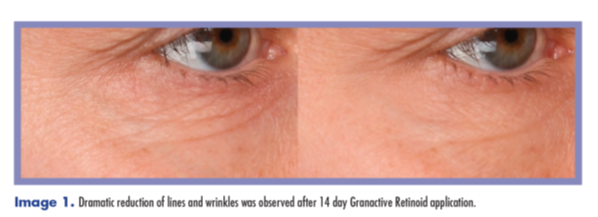
If you aren’t already using retinoids, then there must be a bit of uncertainty that has stopped you up until this point. We know what they are, so let’s address them so you can start your skin transformation.
- Confusion of actual percentage the active ingredient, and trickery
- Which of the retinoids is best to use for your needs? Hierarchy.
How much retinol is actually in that product?!?
You are most likely here after comparing many other retinol products and your mind many be spinning. All those different percentages. How can one company have 1% or 2% and even 10%!!!! ... when another has only 0.1 or 0.2%? There is one disturbing reason.....
The percentage you are looking at on that bottle/website/ad is WRONG!
Many brands like to claim retinol percentages that are not the Finished Percentage ... but the percentage of an "ingredient mixture" that just contains the retinol.

For example, we get our retinol from a mixture called 15D. That patented blend of ingredients has 15% retinol. So we have to add quite a bit more to have an actual finished pure retinol %... but others do not! They like to treat that "retinol ingredient blend" as 100% .... and they can get away with it too.
Examples:
1% of 15D = 0.15% formula. *We could say we have a 1% serum... but do we? No, it is a 0.15%.
2% of 15D = 0.30% formula. *We could say we have a 2% serum... but do we? No, it is a 0.30%.
Can other companies be unscrupulous like that? They can - and do! ... and we know that you will feel more confident with us, knowing that we only work with the Finished Percentage of the Actual Active Ingredients.
Here is one more example. Granactive Retinoid = Hydroxypinacolone Retinoate (HPR for short) plus 90% penetration active.
So, anytime a company states that they have:
1% of Granactive Retinoid, understand that is only 0.10%.
2% Granactive Retinoid is only 0.20%
Hopefully this makes sense and clarifies the confusion/"marketing" that abounds out there.
Please explain the difference between Retinoids: Retinoic acid - Retinaldehyde – Retinol - esters?
Retinoids are a class of chemical compounds related to Vitamin A. They are broken down into four main categories from mildest to strongest: retinyl esters, retinol, retinaldehyde and retinoic acid.
Retinoic acid requires a prescription. It is the vitamin in its strongest acid form. Its percentages range from 0.025% - 0.10%. It can cause redness and visible peeling that is quite uncomfortable for most skin types and can take several months and up to a year to acclimate to.
If you would prefer to avoid the intense acclimation period of prescription retinoids, then an over-the-counter version is the solution for you.
A concentrate like Fusion A is going to give you significant advantages over the pure acid form, and will far outperform other singular, or lesser versions of the vitamin.
Due to the intensity of our ingredients, you still may find that there can be dryness and some possible irritation as you start use of our product. There are many ways to gently move into a product such as this.

Start by choosing the correct percentage.
- If you are brand new to retinoids, always choose the mildest percentage. That would be our 0.15%.
- If you are a long-time OTC retinoid user, the 0.25% would be a good option for you.
- If you are coming directly from the milder forms of prescription Vitamin A (0.025 0.030) then our 0.35 is a nice choice.
- If you are a long-time high strength tretinoin user, then see our Luminosity .55% here as your OTC option.
Start by using the product only a couple of times per week.
Don’t jump in head-first and use a new retinoid every day. Ease into it! Start with 2 days a week and then add on more as you go. There is no need to be dry and flaking or irritated when starting retinoid usage. If you find your skin is reacting…. Take a step back. In a few days start again. It is a process and your skin will acclimate.
Another way to ease into retinoid use is to dilute it with another cream or serum. This is a way to use it more days a week… but to weaken it a bit. Take one pump of your Fusion A and mix it with 1 pump of another product you have. Voila! You now have ½ the %. Increase use as you move forward.
NECK - The neck is always going to be more "reactive" than the face. You may notice more dryness here. You may want to avoid applying this to the neck on an everyday basis, or dilute it with another serum/cream instead before application.
________________________________________
Is this going to penetrate deep enough into my skin?
Oh yes! This is not only a molecular version (extra small nano particles of the active) of retinaldehyde, but it is in a base with special ingredients to PUSH it deeper into your skin.
Understandably, if your body needs to convert retinol and retinaldehyde into retinoic acid, you are going to lose some of its potency. This is where the molecular structure becomes so valuable. Since our retinol and retinaldehyde are micronized, they penetrate very deeply into the skin and will retain a much higher value when converted.
What is DMI *Dimethyl isosorbide?
DMI is a solvent that aids in Dermal Penetration (carrying ingredients across the skin’s membrane). It helps active ingredients effectively reach the source. You will find this in our Fusion A to aid in the granactive retinoid penetration by the ingredient manufacturer. It is GRAS* Generally Regarded as Safe and will also aid in each of the retinoids penetration.
Will retinol thin my skin?
“There are a few myths about retinoids that may erroneously shy potential users away, including the idea that retinol products will thin out skin over time,” Dr. Kraffert says. “This is simply not true; retinoids have the tendency to slightly thicken skin.” The ingredient does this by boosting your natural production of collagen, leading to fewer fine lines and wrinkles and plumper, bouncier skin.
Can you use retinoids at the same time as low pH products like Vitamin C and acids?
Yes you can! There was one study done in the 90's that thought retinol performed best on your skin's normal pH level, but it has since been found that it works just as well at low pH levels. So you have no worries in combining this with your favorites on our site.
Can you use retinoids during the day?
While we really like for you to use your FusionA as your evening treatment, that does not mean that you can't use it during the day if that works better for you or the products in your regimen. The key here is that you must use a good reflecting SPF of 50 to do so. Ingredients like Titanium Dioxide or Zinc will reflect the sun from your skin - protecting your retinol.
Who Is It Good For?
Everyone. If you are looking for smooth, unblemished skin with tight pores and a fresh, clear complexion…. Fusion A is where you should start. It is especially valuable for weathered skin types showing excessive signs of aging. It will help to dramatically smooth and freshen the skin's appearance quickly and is an extremely important part of keeping pores clear.
Do I have to use Retinol every night?
Follow your skin's lead. Our skin is oilier in the summertime and can take more harsh products. If you find that your skin is getting TOO dry in the winter months, cut back with your usage and try every other day or every 3rd day as an option. Definitely keep it in your evening regimen, but take a step back until your skin is more comfortable.
Improve Congested Skin: Platinum Skin Care CEO Jennifer, finds retinoids are mandatory in keeping her acne prone skin looking clear and healthy! "I find that if I do get a pimple, the redness is gone in as little as one week, opposed to several weeks and even months! It puts my skin into a hyper-regenerative mode. As soon as the blemish is healed the mark is practically gone. It is my 'can't live without' product... well, this and my Vitamin B Complex and AB Cleanser".
Minimize Large pores: Due to retinoids ability to aid in shedding the follicle walls, the skin can long-term, temporarily tighten and minimize the look of pores.
Reduce Psoriasis Buildup: Topical retinoids are a helpful tool in managing psoriasis - though they are not a cure. This is because of its ability to communicate with the cells that are overproducing. Apply retinol one time per day onto clean skin. Watch for dryness or irritation and cut back or add other hydration to combat. Our Vitamin A Dream Peel would be an excellent monthly option for you as well.
Ingredients:
Purified Water, Capric/- Caprylic Triglyceride, Octyldodecanol, Dimethicone, Cetyl Alcohol, Propanediol, Dimethiconol, Squalane, Dimethyl Isosorbide, Glyceryl Stearate, Glycol Stearate, Sodium Acrylate/Sodium Acryloyl Dimethyl Taurate Copolymer, Polysorbate 20, Retinal, PEG 20, Phospholipids, Hydroxypinacolone Retinoate, Glycerine, Retinol, Ceramide NP, Ascorbic Acid,
Phenoxyethanol, Ethylhexylglycerin. pH 5.5 1oz./30ml
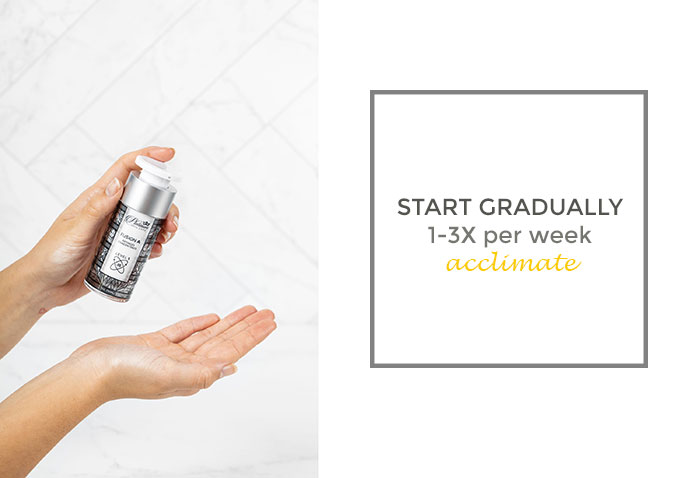
Instructions:
Wash face and apply 1-2 pumps to the face and neck. Follow with other serums and creams as needed.
Warning: Retinoids should be started gradually. Use the product 1-3x per week and add on more days as your skin acclimates. Alternatively, for very sensitive skin types, you may dilute Fusion A by mixing it with another serum or cream and then apply both together.
Warning: Oral retinoid, Accutane can cause birth defects. As of "current knowledge" it is considered best practice to avoid any topical retinoids as well during pregnancy. Some doctors are challenging this and may consider OTC ok. Always check with your practitioner to determine what is best for you. We suggest considering Essentials FX with bakuchiol as an alternative.
Citations:
23 Ways to Reduce Wrinkles
Dr. Kraffart Dermatology
Sauret et al 1994
Didierjean et all 1999
Saurat and Collegues 1994
Ochando and colleagues 1994
Mordon and collegues 2004
Antille et al 2004
https://pubmed.ncbi.nlm.nih.gov/12218231/
